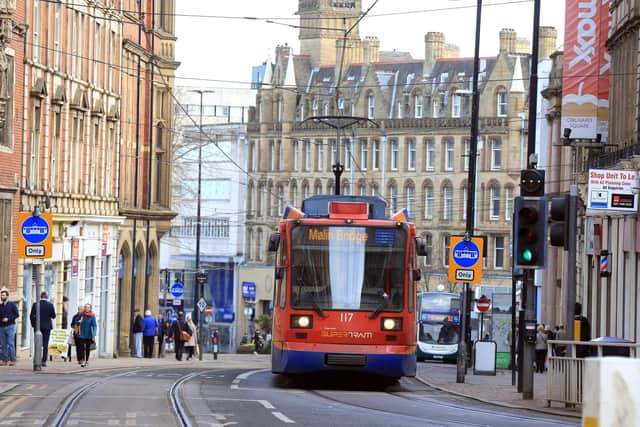Taxpayer to cover £6m loss after Supertram is brought under public control
Stagecoach has run the light rail network since 1997, but in March it will hand over control to a company set up and owned by South Yorkshire Mayoral Combined Authority (SYMCA).
Mayor Oliver Coppard has said there are plans to improve services, making them more affordable and reliable, and expand the 29km network beyond Sheffield and Rotherham.
Advertisement
Hide AdAdvertisement
Hide AdHowever, Supertram has not been profitable since 2019, due to a significant drop in passenger numbers, and millions of pounds of funding is needed to replace ageing trams and upgrade tracks and stations.


SYMCA said it will cost around £23.6m to run the network in 2024/25 – with around 60 per cent of that covering wages – but it is only due to generate £17.3m of income.
It said the new operator will need to cover the £6.3m loss with taxpayer-funded subsidies, but it is working to “decrease its dependence on the public purse”.
SYMCA is expecting energy prices to fall in the coming years and said there are plans to boost ticket sales, adapt to changing travel patterns and cut costs.
Advertisement
Hide AdAdvertisement
Hide Ad“Like other public transport operations, Supertram has seen a considerable reduction in demand as a result of new travel behaviours adopted by the public following the Covid-19 pandemic,” it stated.
“This demand pressure is exacerbated by poor operational reliability and the deteriorating condition of customer-facing assets, such as tram stops, which are visibly in need of repair based on research findings.
“The deterioration is largely due to the age of the vehicles and other infrastructure, which is having a negative impact on passenger experience, perception of the brand, and which urgently needs replacement or renewal.
“For the full benefits of the tram to be unlocked it is essential that as many people as possible use the network.”
Advertisement
Hide AdAdvertisement
Hide AdSupertram, which operates 2,650 services each week on four routes, was used by almost 15m passengers in 2010. But by 2019, that number had fallen to 11.5m.
Passenger numbers plummeted during the pandemic and the latest figures suggest the network is now used to less than 10m a year.
In October, SYMCA announced it had secured £100m of funding to maintain and upgrade the tram network but “significantly more” is needed.
Supertram was owned by a public body, when it opened in 1994, but it was privatised and sold to Stagecoach three years later.
Advertisement
Hide AdAdvertisement
Hide AdThe £240m network, which covers Sheffield, was extended to create a tram-train service which reaches Rotherham in 2018.
A SYMCA spokeswoman said: “The tram network plays a critical role in South Yorkshire’s mass transit network alongside the local bus network, rail links and active travel.
"It provides accessible, high-frequency and cost-effective public transportation to communities in the region, where in some areas, more than 1 in 3 residents (35 per cent) do not have access to a car.
"Around 10 per cent of all public transport trips in South Yorkshire are made on the Supertram network.
Advertisement
Hide AdAdvertisement
Hide Ad“As part of a mass transit network, the tram must work cohesively alongside other public transport networks, such as bus, and that’s why we’re working hard to petition the government for a fair funding deal for vital bus services.
"We’ve accelerated the legally-required work to see whether a franchising model – which would bring regulation of routes, frequencies, fares, and tickets under local control – could also help efforts to transform the region’s transport.
“Our greater ambition is to form an integrated public transport network where all forms of transport work together to provide improved access to employment opportunities and ensure a better quality of life for our residents tailored to individual needs.”
Comment Guidelines
National World encourages reader discussion on our stories. User feedback, insights and back-and-forth exchanges add a rich layer of context to reporting. Please review our Community Guidelines before commenting.